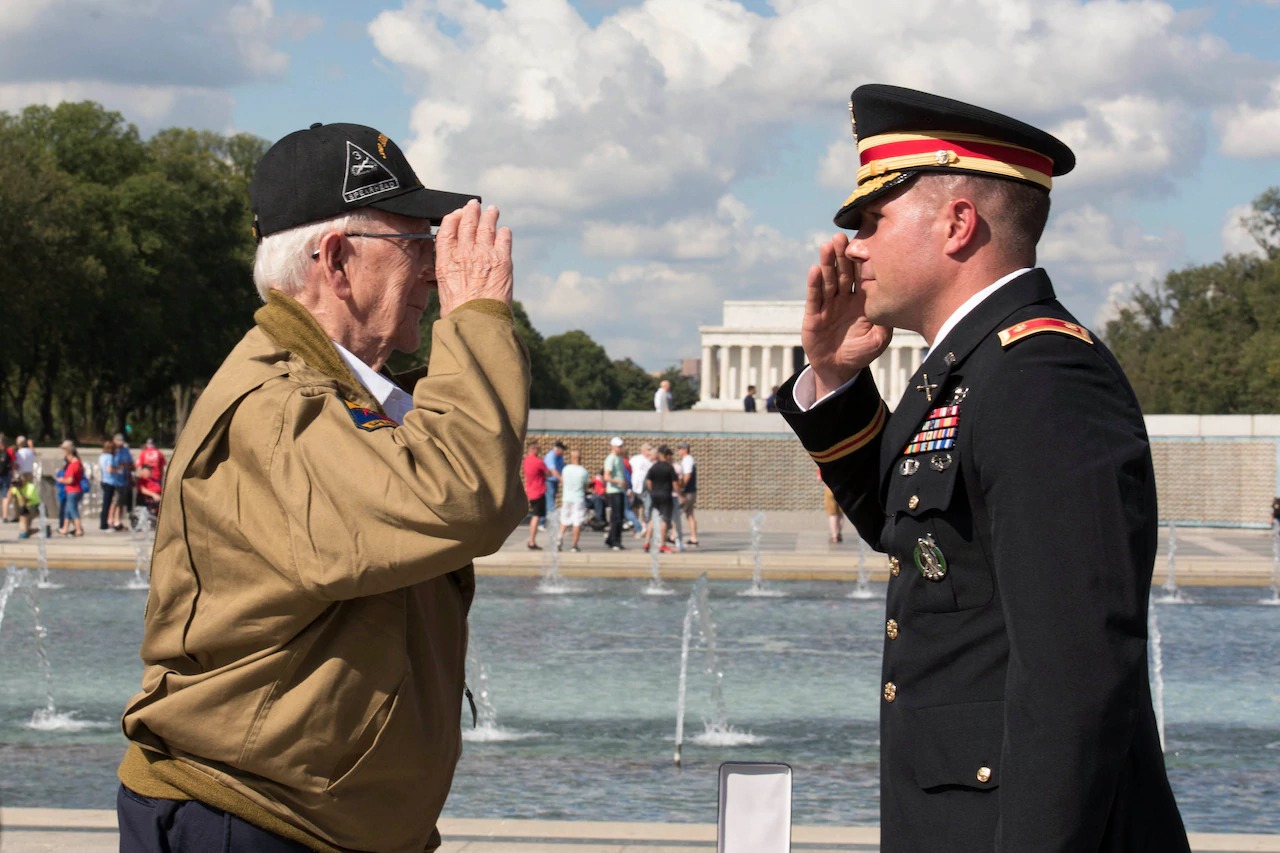Clarence Smoyer was the gunner in a Sherman tank during World War II. He and his band of brothers saw action through the European theatre of war. Smoyer’s crew did have one advantage, the gentle man from Pennsylvania was a crack shot.
The Sherman was put up against the vastly more sophisticated German Panther, which had weaponry far more potent than the Sherman. They saw many of their fellow tank crews blasted by the Panther, and they learned a hard lesson; the lead tank in any encounter always getting attacked.
This crew was then given the new American tank, the Pershing, one of the twenty Pershings allocated to the European theatre. This was a state-of-the-art tank, and while the crew was delighted with their new firepower, they had one inescapable fact to face; they would have to lead every encounter and protect the more vulnerable Shermans behind them.
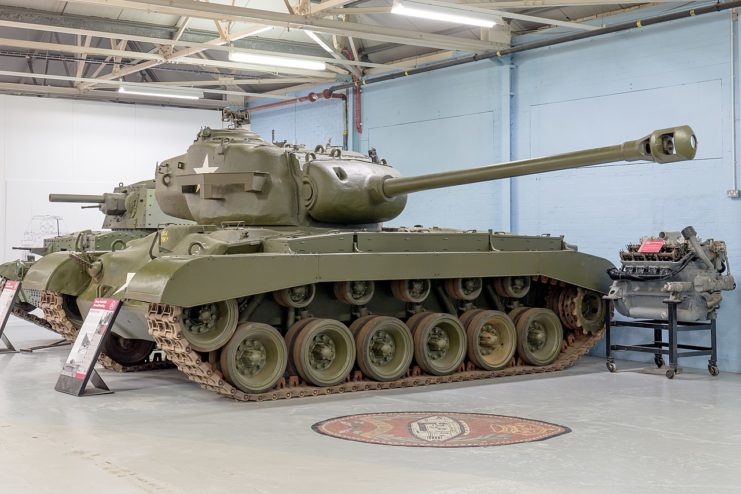
Smoyer joined up aged 19, and this gentle man from the coal country of Pennsylvania was a crack shot, which meant that he was placed as the gunner in the tank crew. Smoyer served with the famous ‘Spearhead Division,’ the U.S. Army’s 3rd Armored Division, and fought in the European theatre. His tank was named “Eagle,” ostensibly after the Philadelphia Eagles.
The Eagle was made famous when it was filmed by the Army Signal Corps taking part in the Battle for Cologne on the 6th March 1945. The film was released worldwide.
Smoyer spoke to 3ad.com about that day as part of documenting the history of the 3rd Armoured Division.
Smoyer told 3ad.com that the tank platoon entered Cologne with the infantry following behind. As they were in the new Pershing tank, they led the way into the outskirts of Cologne.
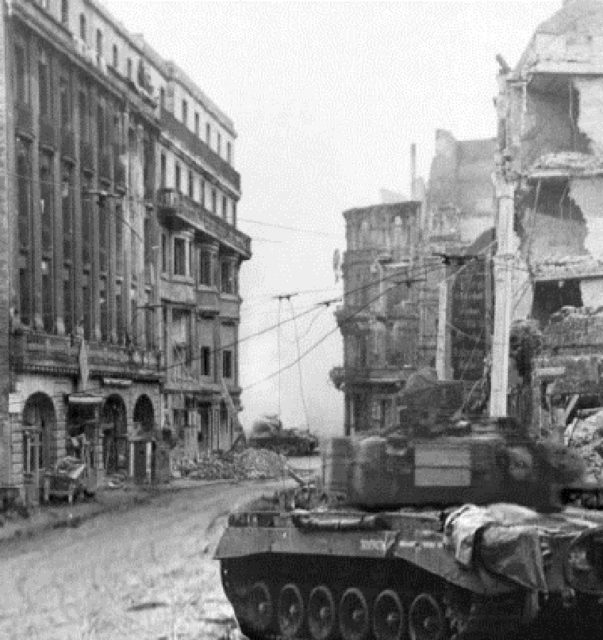
Smoyer saw a German Pz IV tank emerge into the street ahead of them, but by the time he had moved the gun around to face forward, the tank had vanished behind a building. Undeterred, he fired at the building, hoping to score a lucky shot into the tank hiding behind it. The corner of the building collapsed into a pile of rubble as several stories fell into the street. Smoyer had no idea what had happened to the tank. In 2008, he was told by a journalist researching the information that the rubble had utterly smothered the German tank, rendering it inoperable.
The radio in the Pershing crackled into life, telling the crew that there was another German tank in the square near the cathedral, and it was threatening the American troops. This is the action that was filmed by the Army Signal Corps.
They drove toward the intersection where they expected to find the German tank, and as they stopped, SSgt. Early climbed down from the tank and spoke to Jim Bates of the Army Signal Corps. He suggested that Bates get into a good position with his camera, which Bates did.
Early remounted, and the crew planned that Bill McVey, the driver, would take the Pershing fast into the intersection and then halt, allowing Smoyer to fire one shell. They would reverse back into cover and decide their next move.
McVey roared into the intersection and saw through the periscope that the Panther was in front and turning to meet the Pershing. McVey didn’t stop; he continued forward to avoid the Pershing becoming a sitting duck. Smoyer had seen the Panther and fired a 90mm armor-piercing round at it, hitting the Panther under the gun shield. He followed that round up with two more, fired as fast as his assistant, John Deriggi, could load them. Smoyer learned later that both shots had penetrated the Panther and gone straight through the armor on both sides.
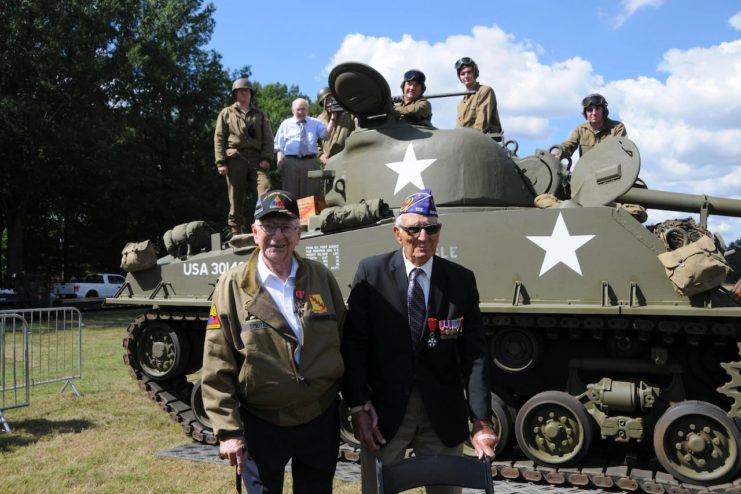
This was the action that was recorded by Jim Bates and released worldwide.
Smoyer survived the war and received his share of injuries. However, he believes that he was lucky to only receive a burn from a gun breech, shrapnel from an exploding mortar, and a concussion from a shell that hit the turret of the tank he was in. He received a Purple Heart for the shrapnel injury.
This entire history was researched by author Adam Makos for his book ‘Spearhead.’ Makos thought that Smoyer and his team should have been decorated for their bravery. Along with Senator Pat Toomey, he arranged for his and two of his team to receive the Bronze Star for their gallantry.
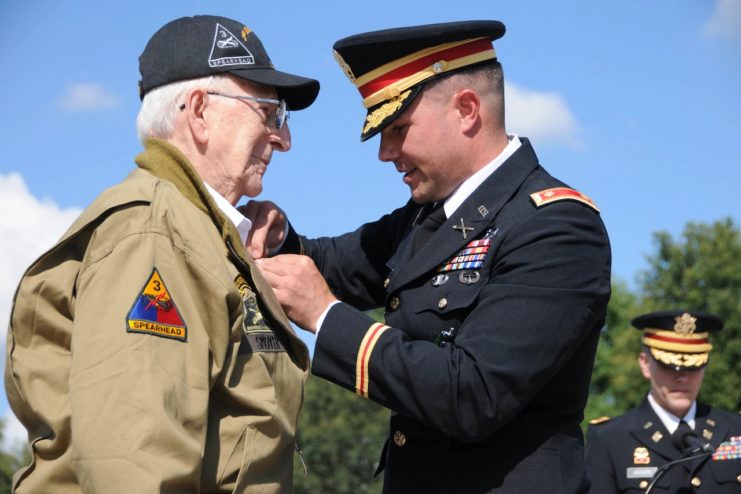
On Wednesday 18th September 2019, the 96-year-old Clarence Smoyer was awarded the Bronze Star by U.S. Army Major Peter Semanoff at the World war II Memorial in Washington. Three of his comrades, John DeRiggi of Levittown, Homer Davis of Kentucky, and William McVey of Michigan, were awarded their medals posthumously.
Another Article From Us: US Air Force Receives First Sikorsky HH-60W Jolly Green II Combat Rescue Helicopters
On receipt of his medal, the ever-gracious Clarence Smoyer said, “It’s an honor. It is an honor, and I will always honor that. I’ll do that in remembrance of all the young boys that were killed over there,”
